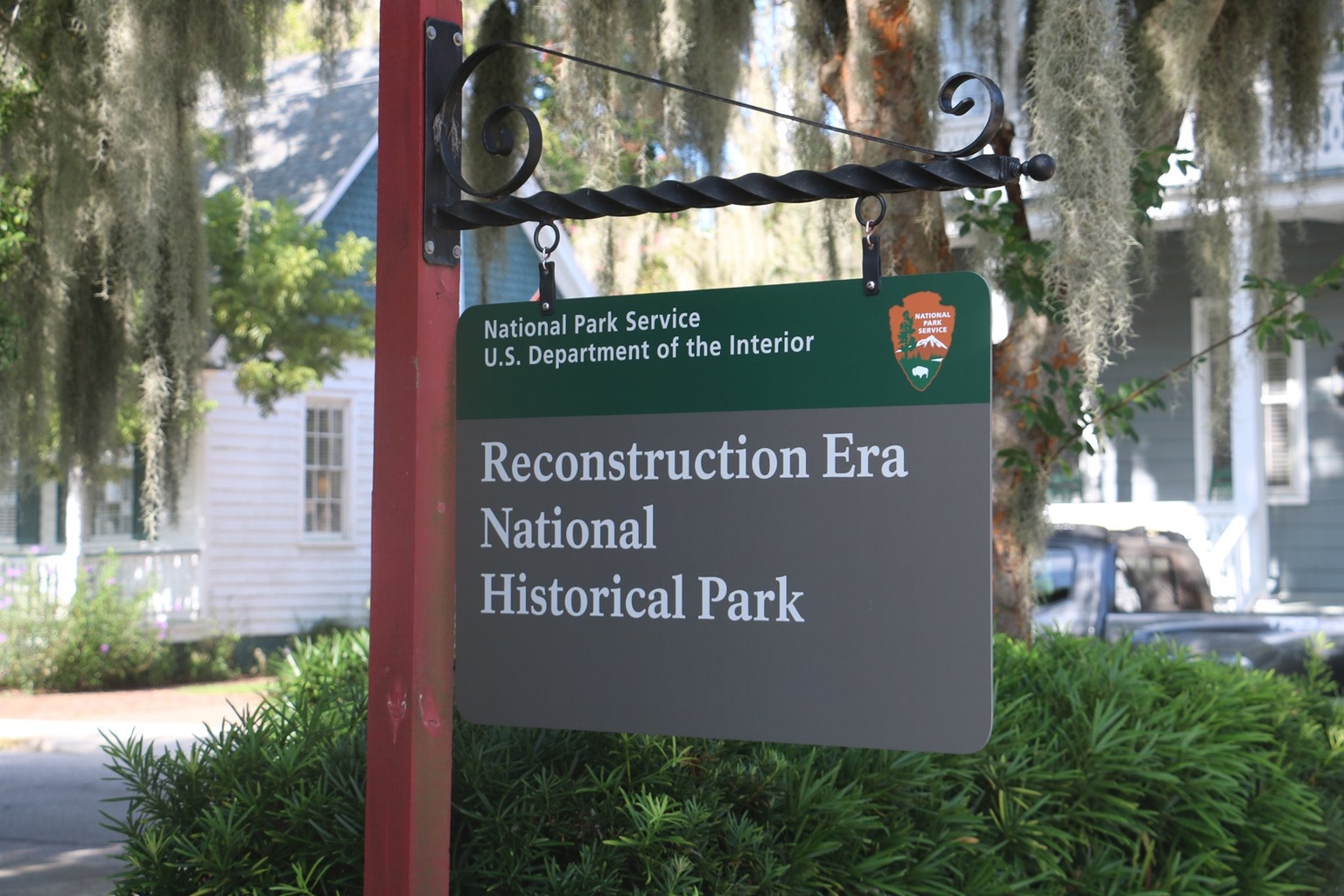"The slave went free; stood a brief moment in the sun; then moved back again toward slavery."
W.E.B. Dubois, Black Reconstruction in America
Reconstruction began during the Civil War and lasted until the dawn of Jim Crow in the 1890s. It has been called the nation’s Second Founding. The Union was restored and four million enslaved African Americans gained their freedom. Passage of the Thirteenth, Fourteenth, and Fifteenth amendments changed the Constitution to prohibit slavery, grant equal citizenship to anyone born in the United States, and outlaw racial discrimination in voting. Sixteen Black men were elected to Congress and hundreds more held elected office across the South. Formerly enslaved African Americans could marry as they pleased and create their own places of worship, and Southern states established public education for Blacks and whites.
Black Southerners led much of this progress. But by the 1890s they largely had to fend for themselves, as federal troops no longer intervened, the Supreme Court denied their appeals, and the Republican Party abandoned them. They had to fight a lonely battle to sustain their gains, facing violence, racial terror and legal conflicts – and the struggle continues. Reconstruction came to an end, but its promise of a free and equal society for all Americans is still a work in progress.

On March 11, 2019 Congress recognized the significance of this crucial period of American history by passing a bill creating the Reconstruction Era National Historical Park in Beaufort County, South Carolina. The National Park Service commissioned historians Kate Masur and Gregory Downs to write a theme study, The Era Of Reconstruction, 1861-1900, which interprets this complex history. In the introduction they offer this definition of Reconstruction:
This was one of the most dynamic, heart-rending and transformative periods in American history…As in the era of the American Revolution, Americans grappled with profound questions: What kind of country would this be? What kind of political system should govern it? What were the rights of citizenship, and who could be a citizen? During Reconstruction the American people remade the country’s political system, not once but twice with long-lasting implications for the meaning of American democracy and citizenship. Few other moments capture the centrality of democracy to the nation’s history and the difficulty of sustaining a broad-based democracy in periods of political and economic strife. It is impossible to tell the story of American democracy without placing Reconstruction at the center of events. The Revolutionary generation had ultimately accepted human bondage as part of the nation’s fabric. During the Reconstruction era, Americans destroyed slavery and struggled earnestly – if not always successfully – to build a nation of free and equal citizens.
National Park Service, The Era of Reconstruction:1861-1900 , p. 8
In their study, Masur and Downs interpret Reconstruction across six themes, which we have used as the structure for Reconstruction 360. We have created an interpretive focus for each theme and placed each one in a different state of the Confederacy:
Theme One - Land and Labor
Interpretive Focus: 40 Acres and a Mule - A Farm in South Carolina, 1865
Theme Two - African American Institution Building
Interpretive Focus: A Seat at the Table – A Family at Home in Savannah, Georgia, 1866
Theme Three - Enfranchisement/New Democracy
Interpretive Focus: The First Vote - Election Day - Virginia, 1867
Theme Four - Civil Unrest/Violence
Interpretive Focus: Violence and Hatred -The Memphis Massacre, 1866
Theme Six - Modernizing/Remaking the South
Interpretive Focus: Teaching Ourselves - A School in Alabama, 1868
Reconstruction 360 invites you to explore this history interactively using video vignettes, embedded videos, short contemporary documentaries and K-12 resources. The website is designed for the general public, students, and educators who use a range of desktop and mobile devices. It employs 360° scenes that utilize composite characters developed from primary documents and historical research, with an emphasis on the agency of freedpeople.
For more information please contact [email protected].
Photo courtesy of the National Park Service